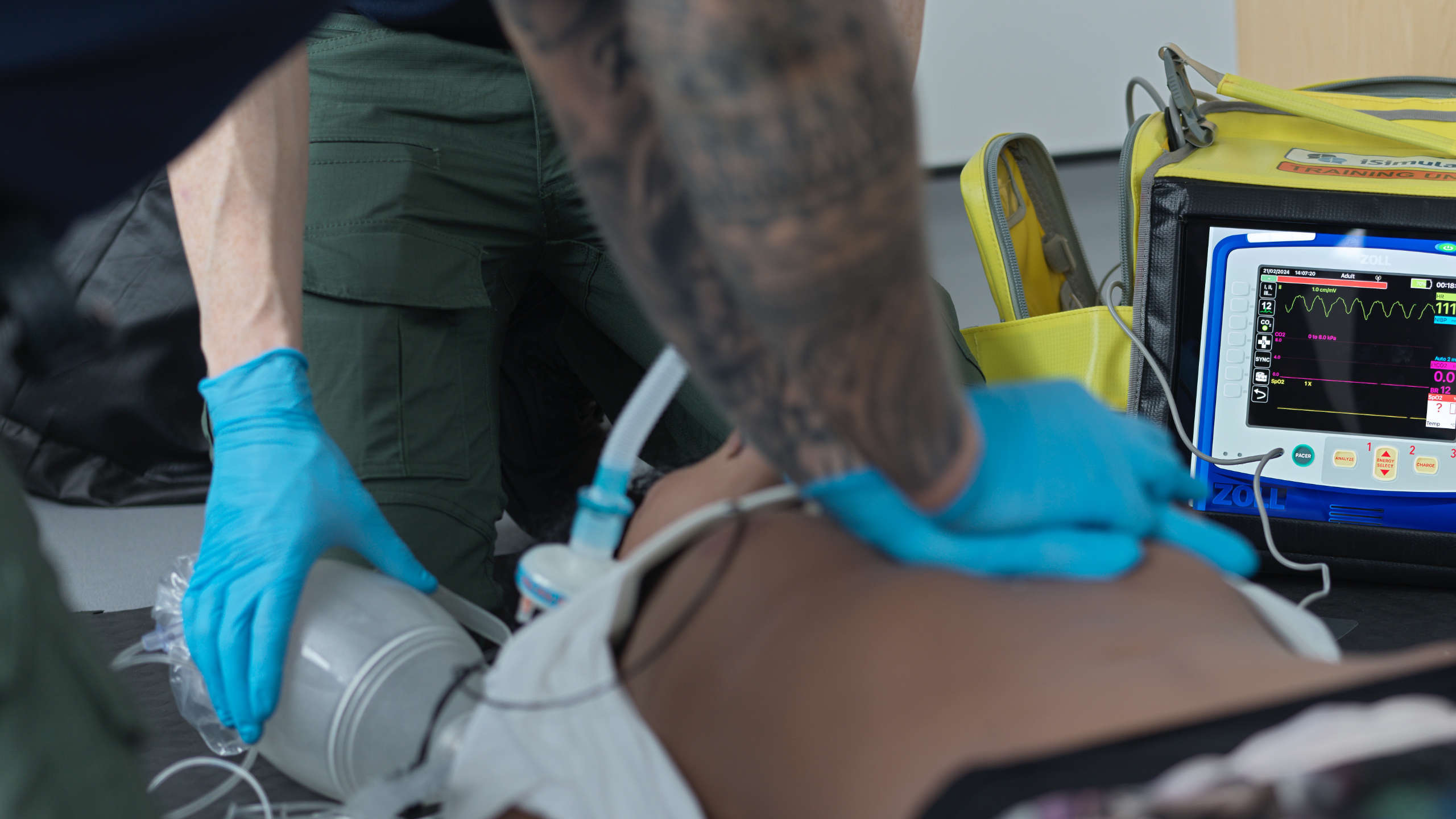
Medical Cardiac Arrest OSCE
Pre-hospital CareUse this resource in conjunction with your real-world training

Experience Summary
In this 360-degree video, observe a pre-hospital clinician perform an OSCE station of a patient who is unresponsive.
The brief they have been given is as follows:
You have been called to attend an adult patient with chest pain. The patient was described to have been clammy with unmanageable pain.
Whilst eating breakfast the patient had a sudden onset of central chest pain radiating to arms and jaw. Levine sign was described on the call, and the patient was clammy also.
Five minutes prior to ambulance attendance the patient collapsed and became unresponsive.
PMH: previous MI
Rx: aspirin, GTN, atorvatatin
Allergies: unknown
FHx: unknown
SHx: unknown
Clinical Context
ALS begins with an immediate assessment of safety—ensuring the environment is safe for the responder and patient. Once safe, the responder should assess the patient’s level of consciousness using the AVPU scale (Alert, responds to Voice, responds to Pain, Unresponsive). If the patient is unresponsive, the DRS ABCD approach is used:
- D – Danger: Check for hazards to yourself, bystanders, and the patient.
- R – Response: Assess the patient’s response to voice or pain.
- S – Send for help: Call emergency services immediately or instruct someone nearby to do so.
- A – Airway: Open the airway using a head tilt–chin lift or jaw thrust (if trauma is suspected). Check for visible obstructions and clear them if safe to do so.
- B – Breathing: Look, listen, and feel for normal breathing for up to 10 seconds. If the patient is not breathing normally or only gasping, start CPR.
- C – Circulation: If there are no signs of circulation (no pulse, unresponsive, not breathing), begin chest compressions at a rate of 100–120 per minute, with a 30:2 ratio of compressions to breaths.
- D – Defibrillation: Attach an Automated External Defibrillator (AED) as soon as available. Follow voice prompts and deliver shocks if advised.
ALS also involves considering the reversible causes of unconsciousness, often remembered using the “4 Hs and 4 Ts”:
- Hypoxia, Hypovolaemia, Hypo/hyperkalemia (and other metabolic issues), Hypothermia
- Tension pneumothorax, Tamponade (cardiac), Toxins, Thrombosis (cardiac or pulmonary
If a pulse is present and the patient is breathing inadequately, provide rescue breaths using a bag-valve-mask with supplemental oxygen if available. Continuous monitoring and reassessment are vital.
ALS emphasizes effective communication, use of structured handovers (e.g., SBAR), and timely handover to emergency medical services upon their arrival. Early intervention with high-quality CPR, defibrillation, and management of reversible causes significantly improves survival and neurological outcomes.
Learning Outcomes
- Observe the safe management of a clinically unwell patient.
- Observe the demonstration of an effective primary survey in the medically unwell patient.
- Observe the demonstration of teamwork, communication and effective clinical leadership.
- Observe the safe use of resuscitation guidelines in the management of an adult in cardiac arrest.
External Resources
